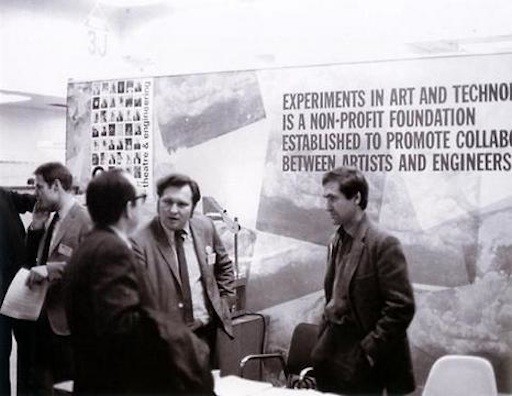Since the advent of the computer and subsequent advances in the digitalization of modern culture, artists have been increasingly turning to new technology and incorporating it in their work. This assimilation of digital technology has transformed conventional practices like painting, sculpture, and music, while also spawning new categories, including Internet art and virtual-reality installations.
The Austin Museum of Digital Art—which, when founded in 1997, was the first museum dedicated to the medium— defines digital art as "art that uses digital technology in any of three ways: as the product, as the process, or as the subject." Various names have been given to these computer- and multimedia-based creative processes over the years, but it is now generally acknowledged by the broad term "new media art," which encompasses subdivisions such as digital art and net art while focusing on forms of artistic practice that appear with emerging technologies.
While the origins of new media art can be as nebulous as the term itself, early progenitors of the genre include artists of the late-19th and early-20th centuries like Eadwaerd Muybridge and Thomas Wilfred, who worked with the newly manifested technologies of their time. In 1958, Television Décollage by Wolf Vostell became one of the first artworks to incorporate a television set, setting the stage for other new media artists and collectives to experiment with the use of technology in their art, often embracing ideas of audience participation. Nam June Paik and others began to produce art using video technology, while groups like Fluxus, which included artists such as John Armleder and Jonas Mekas, would go on to stage their own multimedia performances. In 1966, the group Experiments in Art and Technology (E.A.T.)-whose founders included Robert Rauschenberg and Robert Whitman, alongside Bell Labs engineers Billy Kluver and Fred Waldhauer-staged Nine Evenings: Theater & Engineering, which exhibited collaborations between artists and engineers, utilizing emerging technologies, such as Doppler sonar and wireless FM transmitters, in a new artistic context.
In subsequent decades, many new media artists have emphasized interactivity in their work, prompted by the development of advanced computer graphics in conjunction with the widespread adoption of the Internet. Due to the steady increase of shared information access and connectivity between users online, common themes of new media art unsurprisingly touch on topics of appropriation, identity, and social activism. While the inherently technological aspect of new media art can inhibit audience participation, pioneering artists in the genre continue to realize new ways to reach viewers on a visceral and emotional level.
An Introduction to New Media Art























